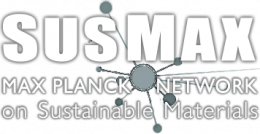A tandem project of Dr. Wenyang Xu (MPI of Colloids and Interfaces), Dr. Yongkang Wang, and Dr. Arsh S. Hazrah (MPI for Polymer Research)
About/Topic
Uncover and manipulate the water surrounding cellulose for a green, sustainable nanocellulose production.
Persons
- Dr. Wenyang Xu (Group Leader @ MPI for Colloids and Interfaces, Sustainable and Bio-inspired Materials Department)
- Dr. Yongkang Wang (Group Leader @ MPI for Polymer Research, Department of Molecular Spectroscopy)
- Dr. Arsh S. Hazrah (Group Leader @ MPI for Polymer Research, Department of Molecular Spectroscopy)
Project summary
Nanocellulose, derived from cellulose, the most abundant biopolymer on Earth, holds enormous potential as a sustainable alternative to fossil-based, non-degradable materials. However, fully unlocking this potential is challenged by the unsustainable nature of current production methods. HydroSusCell tackles the sustainability gap in nanocellulose production. Bringing together MPIKG and MPIP, we pair cellulose surface chemistry with sum frequency generation (SFG) vibrational spectroscopy to reveal water clusters at the cellulose-water interface and their role in stabilizing uncharged nanocellulose colloids without heavy chemical modifiers or dispersants. We aim to innovate a cleaner processing framework that advances circular, bio-based materials.

